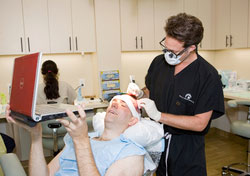For many, hair loss and baldness are common problems that come with aging, especially for men. There are various treatments and remedies available but none can guarantee 100% effectiveness. Medicines like Minoxidil are easy to find, easy to use, and to some extent, they do provide solutions for hair loss. Sadly, these topical hair treatments aren’t always effective.

Why People Opt for Hair Transplant Surgery
When medicines and typical treatments for hair loss don’t bear any results, the next best solution is hair transplant surgery. Initial stages of hair loss and baldness often occur first on the area of the temple and then continue on the crown area. Even when people suffer from this problem, there would still be some layers of thick hair along the sides and at the back, which enables doctors to transplant healthy growing hair on the thinning or balding areas on the scalp.
A Brief History of Hair Transplant Surgery
In the United States, the first ever hair transplant surgery attempt was done in 1952. Over the years, there have been made techniques developed and though the concept of these transplant procedures are basically the same, today’s procedures are more refined and sophisticated. With modern studies and technological advancements, this type of surgery has become more precise and has a greater success rate compared to early practices. To date, undergoing this surgical procedure still cannot guarantee 100% success but with all its developments, it is surely the best option to have.
How It Works
When it comes down to it, the hair transplant procedure is fairly easy to understand. The first step that the surgeon takes is to identify possible hair donor areas on the scalp. These areas are often the sides of the scalp as well as other areas that are thickly populated with hair. The surgeon then extracts skin grafts from said areas, then transplant them on problematic areas of the scalp thus completing the process of hair transplant surgery.
Getting to Know Hair Micro Grafts
Precise skills and patience on the part of the surgeon is needed in order to successfully transplant healthy hair. Surgeons work on skin grafts that are categorized and measured by either “mini-grafts” or “micro-grafts”. Consisting of a single transplant of hair, micro grafts are used to cover or thicken problematic areas of the hair. Usually, these areas are located on the top or the hairline of the scalp and then used to repopulate bare areas of the scalp.
Micro Graft Growth
After surgeons locate and determine donor hairs to be transplanted, precise angled incisions are made to extract the donor strips. This is done to retain a natural looking effect but careful and precise skills are needed to perform a successful hair transplant surgery. And because the skin on the scalp is also incised, grafts transplanted on the new scalp location would continuously grow. The growth rate of the transplanted hair would be similar with the donor area, and will usually develop and grow at a regular rate.
